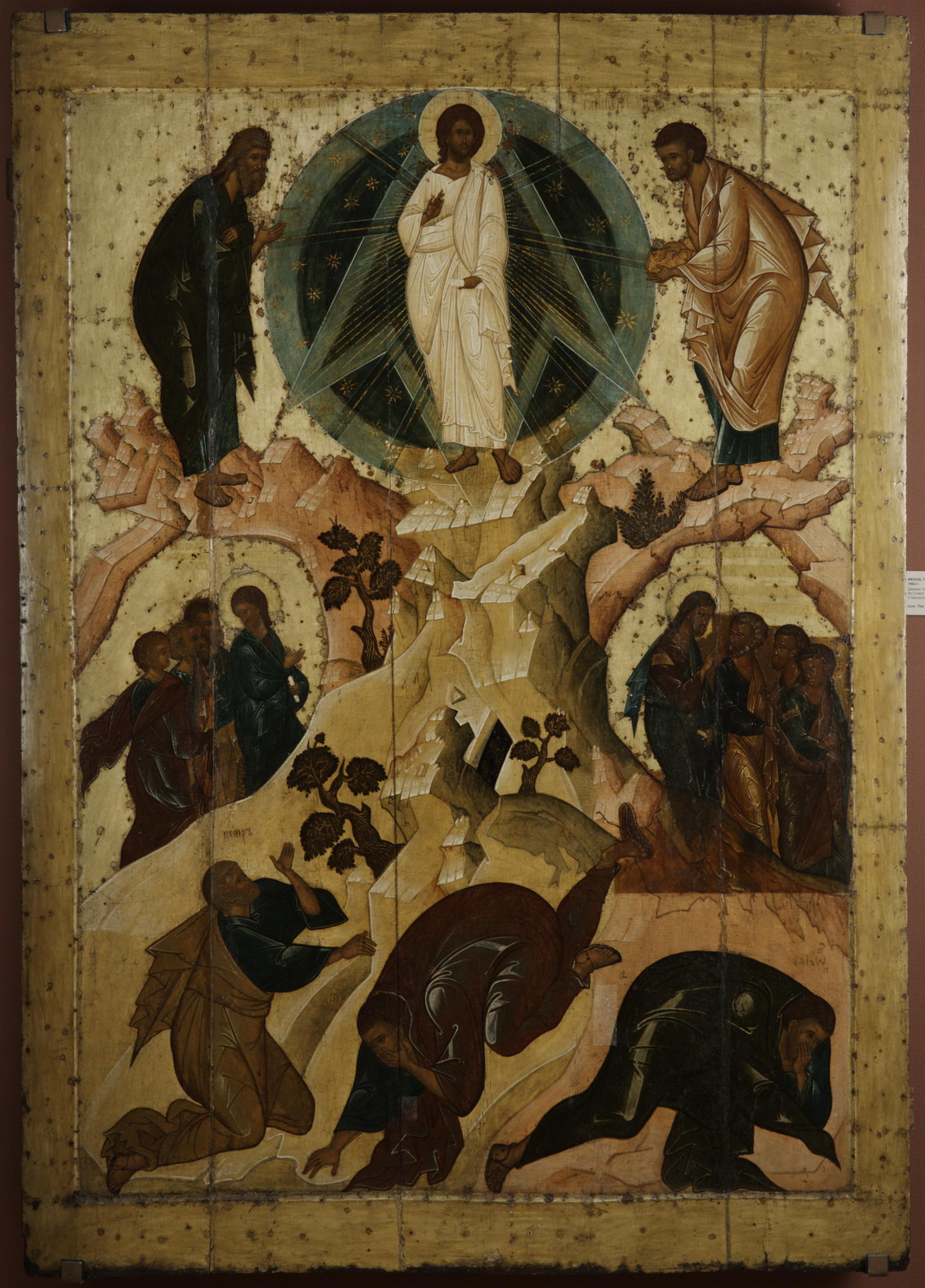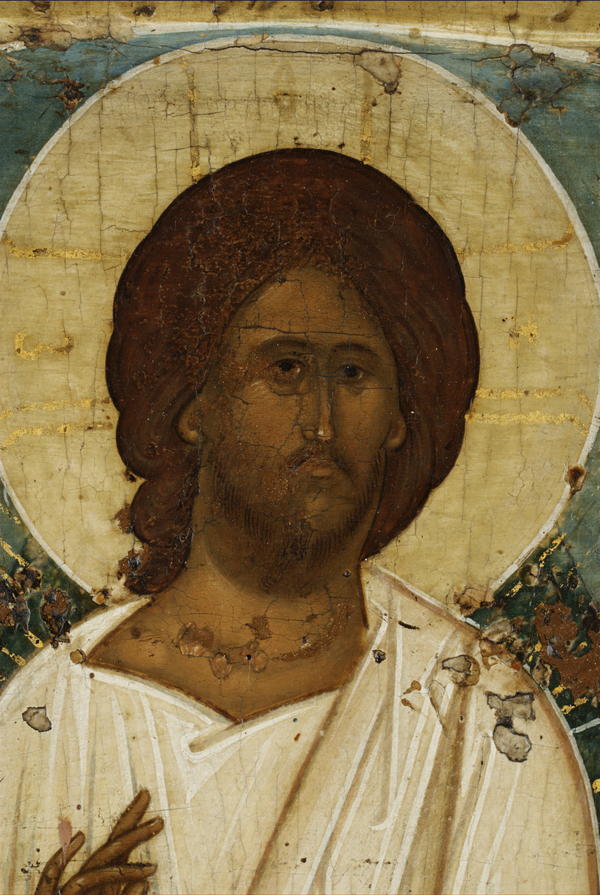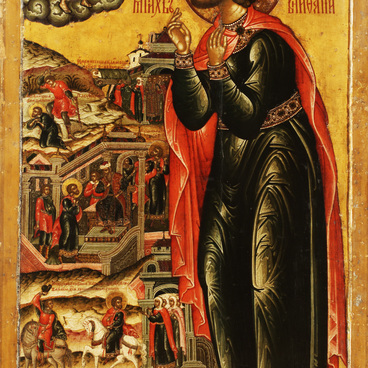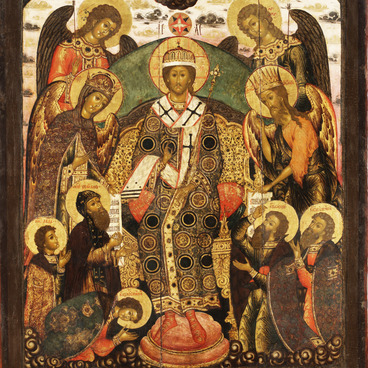The icon depicts the Transfiguration of Our Lord Jesus Christ, the demonstration of Jesus Christ’s divine greatness to his closest disciples on Mount Tabor. The Holy Scripture says that Christ, together with his disciples Peter, John, and James, went up the mountain to pray. There Christ’s face shone like the sun, and his clothes became snow-white. Prophets Elijah and Moses miraculously appeared beside him and began to talk to him. Suddenly the voice of God came out of the cloud: ‘This is My Beloved Son, in whom I am well pleased; Listen to him’. The disciples fell facedown in terror, because they had witnessed the manifestation of the divine hypostasis of Christ. When descending from the mountain, Christ forbade them to speak of that vision until the moment when the Son of Man has been raised from the dead.
Transfiguration
Время создания
First half of the 16th century
Размер
163x117 cm
Техника
Tempera
Коллекция
Выставка
4
Открыть в приложении#1
Unknown author
Transfiguration
#8
#9
The icon shows a detailed version of the story. In icon painting, version is a variant of the image within the canonical mode. Christ and the Apostles were depicted three times: climbing Mount Tabor, during the Transfiguration, and during the descent. Christ, as described in the New Testament, is depicted in white robes, emanating rays of glory as the true Son of God.
#10
The prophets are bowing before the Lord. Their figures are located on two mountain peaks; according to a legend, these are the mountains of Horeb and Sinai. The gestures and poses of the Apostles who have fallen in fear are expressive: Jacob is covering his mouth with his hand, John has lost his shoe during the fall, and Peter is looking at Christ in amazement.
#11
The saints’ faces are distinguished by subtle features. For them, a fused ochering technique is used; in iconography, this term is used to denote the gradual transition from dark to lighter tones in the depiction of faces and open body parts.[1] The folds of the clothes are delineated by colored strokes.
#12
The Transfiguration icon is the main temple image of the Transfiguration Cathedral of the Yaroslavl Spassky Monastery. In the 1920’s, the image was restored at the Yaroslavl branch of the Central State Restoration Workshops where they stripped the board from the later layers of paint until the first original layer of paint was uncovered. Old masters applied new images on top of the original image when they wanted to renew the colors of an old icon that was prone to fading and darkening. At the same time, new details or a completely different plot could appear on the icon.
#13
Yaroslavl Museum Reserve
читать дальшескрыть
00:00
00:00
1x
Transfiguration
Время создания
First half of the 16th century
Размер
163x117 cm
Техника
Tempera
Коллекция
Выставка
4
Открыть в приложении
Поделиться



